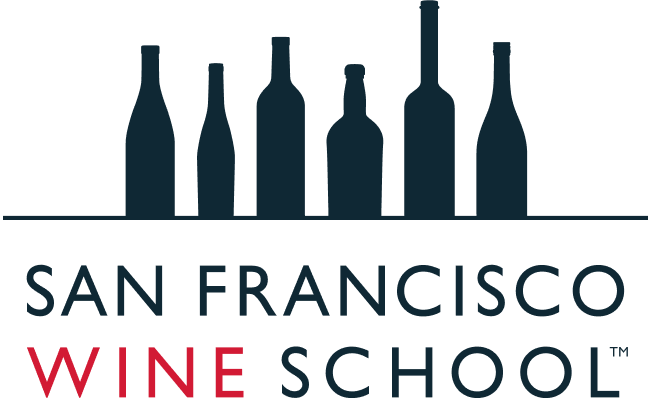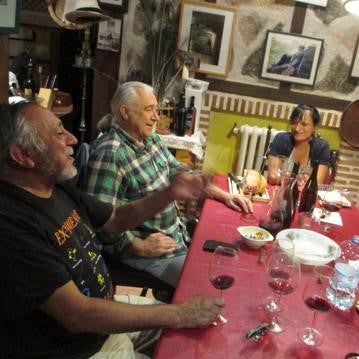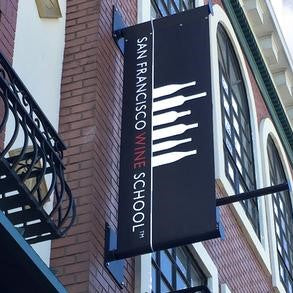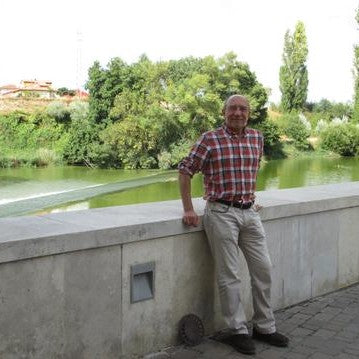by David Furer
Despite being 60-90mins. by car or rail to/from Madrid, compared to most of Spain’s known quality wine regions the ‘Garnacha de Gredos’ area remains unknown to the US wine pro. Its establishment as a modern wine-producing dating only to the 1990s, the recent economic difficulties beginning in 2008 which crippled nascent efforts, the occasional infighting and inability or unwillingness to embrace contemporary marketing methods, a lack of an identifiable Denomination of Origin or dynamic independent body to organize group efforts have kept the hard-working and visionary growers and bodegas from the recognition their unique situation and wines deserve. It remains at this time one of the rare ’undiscovered territories’ in the Old World, more so as the wines’ quality is generally commensurate if not in excess of the prices…for now.
Although not exhaustive the following is a good representation of the wineries located in the broader Gredos wine area as described in my previous entry. Most are available in the US though in only a handful of states.
Garnacha Alto Alberche
Rafael 'Rafa' Mancebo, once an alderman for the village of Navaluenga and the area's driving force for wine as the president of the Vinos de Cebreros denomination project, said that Parker's tasting of Garnacha at Wine Future 2009 helped to raise the level of interest in the grape. "All this happened when a group of people enjoying our annual wine celebration started talking about our own project. We thought we could make the wine, bottle it, and have our own brand. This happened over a decade ago during the height of the EU-enforced grubbing up schemes. We wanted to show the other small producers that they could also make good quality wines and so keep their vines; the price the cooperative was paying them at the time was insultingly low. This is a unique place." GAA is owned by a disparate group consisting of members of six families cooperating on the work including to having built the winery themselves. Their winemaker is José Maria Grande, a son of one of the owners who signed on as GAA's winemaker. Their brand is 7 Navas, a reference to the villages in the western part of the Alberche Vly. from where the grapes are sourced for their Joven, Roble, and Selección blends. Mancebo’s two single vineyard wines are Fincas Faustina and Catalino, the latter with an overwhelming amount of quartzes creating more reflective sunlight for quicker ripening, both with labels hand-painted by a local organization of handicapped people, the printing costs of which go to the organization.
The first commercial vintage was in 2006 when Grande was in enology school, but "my family has always had vines, I worked with the vineyard next to us owned by my grandfather. Here we've more color intensity and acidity in our Garnacha, more minerality but it needs to be taken care of especially at harvest time as sugar levels can skyrocket,” he said but manages to maintain acidity at high levels and a low pH of 3.3 at the end of fermentation. “In other parts of Spain it's a problem, here it's not because of our low nighttime temperatures from the high altitude.”
Favorites: Joven, Roble, Catalino, Faustina
http://
Daniel Ramos — Zebreros
Having grown up in this region from the age of 10, Daniel Ramos began his interest in agriculture taking care of his grandfather's garden, later studying agricultural engineering giving it up for viticulture when he discovered that “wine was much more than what my parents experienced as drinkers. Upon finishing my studies with Jose Penin I met Telmo Rodriguez who wanted to start something in this region. We started something in two different villages including the one Rodriguez runs now in the town of Cebreros, Bodega Pegaso.” He now consults to Bodega Don Juan del Águila’s over 300 growers corralled into its cooperative, once in danger of closing down with decline of local consumption and from the blending into other regions' more successful wines. Ramos brought in producers to custom-crush at del Águila, a larger, more technically-adept facility, and has since made three vintages at his own El Tiemblo to another area for his own purposes.
For Ramos the difference between working in the cellar with Garnacha grown in sandy soils versus those grown upon schist is "the minerality that schist soils give more aromas from the terroir, including that of the surrounding herbs, and darker fruits while the 'arena' ones are more floral and fruit-driven." Organic growing is rigorously followed, vines are encouraged to ripen slowly so as to maximize ripening, no yeasts are added, and fermentations are occasionally extended.
Ramos's nickname as a teenager was ’K 'pi’, earned by his having spent his first decade in Australia before relocating to the Gredos Mountains where he garnered the moniker 'Capitan Australia' from his new countrymates. K 'pi' is the brand for his entry-level wines with Zerberos applied to the higher level ones, with both vinified in a range steel, fiberglass, PVC, French oak and tinajas (clay jars). He’s always grown organically, asking and helping his suppliers to do the same. Yields are typically low, especially on the older Garnacha sites. Ramos employs foot-treading and basket-pressing for his wines, is fond of extended fermentations unassailed by heating or cooling other than what nature offers, adds no yeasts or other foreign materials,
Favorites: La Movida, Arena, A+P, Pizarra, El Berraco (all are Zerberos brand)
http://www.newspainwines.com/
Don Juan del Águila
Established in 1962, this El Barraco village cooperative had its Gaznata brand created for it by Ramos following a meeting he’d attended at which shuttering the doors had been discussed. The young winemaker proposed an integrated plan to save the bodega which has since gone from success to success with the recently created Jara brand hot on the heels of Gaznata. Some of Ramos’s techniques addressed above are applied though in a less rigorous fashion. The wines are comparatively lower in price though don’t suffer in quality.
Favorites: Rosado, Joven, Gredos
Vinos Ambiz
Italian-born, Glasgow-raised Fabio Bartolomei partnered with Ramos in the renting of an old building in El Tiemblo. "I'm not an ideological adherent; I'll use sulfites if necessary but avoid them when I can. I'm blessed with a very benign climate so have only been forced to use them on rare occasions. I want to express terroir of the variety, climate, vintage and the only way to do that is to not manipulate it, not to make it overly funky. Natural isn't an excuse for making bad wines." The 1.2m liter capacity of the winery far exceeded the 15,000 liters each both expected to make in the facility's inaugural 2012 vintage, and they haven’t yet gotten close to maximizing their potential.
Bartolomei doesn't own any vineyards but buys Garnacha, Albillo Real, and Sauvignon blanc from local growers along with a more famous winemaking family from which Ramos also acquires some of his Sauvignon blanc. Neither fines more filters their wines.
Favorite: Garnacha Sotillo
http://vinosambiz.blogspot.
 Bernabeleva
Bernabeleva
In the shadow of Guisando Hill, site of Queen Isabella's crowning, the Bernabeleva project began in 2007 when the Álvarez-Villamil family inherited a grape-bearing finca where they decided to make wines from their grapes formerly sold to the local cooperative. This right denied their Republican-sentimented ancestor was augmented in their bringing in Priorat's Raúl Pérez as a consultant.
Its 34ha of vineyards are across the road from the winery, mostly planted to Garnacha with small amounts of Tempranillo and Moranillo/Listan, Preto/Mission, along with Albillo Real and Macabeo for a dry white, and Muscat a Petit Grains planted in 2008 for dry and sweet whites. Lower elevation and rainier than Cebreros which they claim helps to provide a minerally sensation and wildflower notes to the wines. Granitic sand is the topsoil for approximately 30cm before hitting solid granite. Their organic growing methods use cow manure culled from on-site cattle with the same applied to vineyards which they rent.
Reds macerate as whole bunches for up to 45 days, whites up to 5 days which helps give Albillo even more of its already deep color. The house style is modern and clean, crisp and fresh, light in body, easily acceptable for the US market. Helping that is the brand image of the goddess Diana sitting astride a bear while holding a wine glass.
Favorites: Garnacha de Viña Bonita, Cantocuerdas Albillo
Marañones
Owned by enologist Fernando Garcia with Fernando Cornejo, both of whom began by working with Telmo Rodriguez at Cerbreros but wanted to do something as far away as possible from what Telmo was doing. I was shown around by their 26ha of organic- and biodynamic-grown Cebreros vineyards at San Martin de Valdeiglesias by general manager Alvar de Dios. Planted in 2008 mostly N/NW-facing to minimize excess exposure to the sun because, "summers here are extremely hot and we're looking for freshness in our wines,” said the young GM. Horses are used for their labor in tilling weeds in the lower-lying sites while their manure acts as natural fertilizer. A bit of the native red Moranillo is grown amongst the Garnacha vines which de Dios says almost every vineyard has some, sometimes mistakenly calling it Carineña. However Marañones ferments its Moranillo separately for use in a basic wine. A seemingly conscientious type, de Dios emphasizes his work taking care that each site receives its own individual care.
Favorites: Marañones, Peña Caballera
http://bodegamaranones.com/en/
Canopy
At the extreme southern portion of the Gredos partners Belarmino Fernandez, a key player in the Garnacha de Gredos initiative, and Alfonso Chacón Gil play with 8ha of circa 1996 Syrah which finds its way into its Malpaso label. That is unless…”wild boars eat up to 30% of the harvest, picking the best for themselves," exclaimed Fernandez in their El Rosal vineyard. In 2004 Belarmino left a restaurant where he worked as a sommelier while importing wines for his company, Alfonso worked many years running a hotel, restaurant, and a wine bar. While their businesses, in Madrid and Toledo respectively, are thriving with occasional help they still do all the work primarily themselves. "When you present a bottle of wine to your clients they can't possibly know the work that goes into making it," said the long-time restaurateur Fernandez. This led to them releasing for the first time a young red wine without oak because the importers are asking for cheaper and easier-drinking wines, the new one in question to retail in the US at $10. Besides being a good commercial point it's not the aim of their project because it makes no sense to them to make this sort of wine with such 'noble' old grapes.
The 800m elevation El Rosal vineyard rests upon granitic soils. "Because their are no other crops around the influence of the surrounding aromatic plants may be noticed in the wines," said Chacon. "This also isolates us from contamination from other agriculture and helps to keep the overall health of our organic viticulture." They work the soil with sheep manure which they claim breaks down more easily than other manures and with copper sulphate, avoiding plowing in order to keep the natural ground cover. "We harvest a low 1000kilos per hectare, more if the boar wouldn't eat so much," lamented Fernandez. No yeasts are added, whole bunches are primarily foot-trodden once daily, temperature-controlled vertical plastic vessels of 1500l for pressing and fermentation, all lots fermented separately, macerations done cold.
Favorites: Malpaso, K(a)os
http://www.bodegascanopy.com/
Garnachas Unicas CB
A partnership of Guillermo Fernandez and Carlos Arenas, their brand is Maldivinas with a sub-brand of La Movida. Vinifying at the El Barraco cooperative, the friends of 20 years had previously no background with wine. They started buying vines in Ribera del Duero but with costs were too high eventually decided to set up shop in their native Gredos. "It was known for bulk wines but we saw a lot of possibilities in this place. We were looking for vineyards and first ended up buying parcels in La Movida. It was an expensive hobby so we decided to make it a business," said Arenas, contracting for parcels while working their own.
They work in slate soils in La Movida from 20-45cm of topsoil, and granitic sand soils which require greater maturation for the grapes to mature, doing only enough green pruning so that "the grapes are still protected from the sun, harvesting the parcels when each is ripe so as to get the most out of each direction's orientation." They work exclusively with Garnacha with no interest in changing…for the moment. Their wines, like many higher-priced categories, are more accepted on the export markets than Spain due to the current economic situation. "Rioja and Ribera still dominate throughout Spain," he lamented. Autochronous yeast, cold maceration of 3-5 days, soft extractions, and no fining or filtering are the norm here. “We want to keep fresh wines and integrate the acidity. We are careful, too, of harvesting time; if you delay just a bit you find the sugar and alcohol levels are really high. It's hard to work in the cooperative which sees so much activity during harvest time, but it's also useful to have people like Daniel and Ruben share information with us." Fernandez and Arebas opened their bodega this year.
Favorites: La Movida, Doble Punta 'Garnacha de Gredos'
Alonso
Ruben Díaz Alonso and José Bragado are the guys behind Ruben's eponymous project, one that lays claim to being "the only one in the Cebreros group who is truly autochronous,” a reference to his birth in this hilltop village. Working with vines was an inherited talent learned directly from his grandfather, a man who both grew vines and made wine until Franco’s administration obligated small growers to sell their produce to cooperatives. Ruben was a professional photographer who ended up working in real estate buying and selling vineyards, something his grandfather assisted by giving advice to his kin. On one of these vineyard visits the elder imbued the younger with a curiosity which ended up in 1999 an obsession with "the desire to preserve a heritage that was quickly disappearing." The younger Alonso wanted to make wine but had no background in enology so he established friendships with Daniel Ramos and Telmo Rodriguez who early saw the area as a place for more than bulk wines. It was his grapes that earned Jimenez-Landi and Raul Perez of Bierzo the highly-rated wine from Parker, the 'El Reventón’. During this process he discovered integrating traditional methods along with the Burgundian model of differentiating vineyard parcel attributes with lower extractions along with being the only regional bodega to experiment with barrel fermentation for reds. From 2010 he's whole bunch-fermented and foot trodden all grapes. Garnachas receive 6-7 days cold maceration, 18-25 days fermentation, up to four months post-fermentation maceration. All vines are grown organically using a mule on every site exclusively due to the sites being steep at 850-1080m. All Albillo Real vineyards here are north-facing.
Favorite: Cerro de la Estrella
Pegaso
"This isn't a vineyard project, it's one to show the village of Cebreros,” attests Telmo Rodriguez of his circa 1999 Pegaso project. The property and house upon it belongs to a friend who in 1999 purchased a section of what once a 3000ha finca then being sold off. "My approach to this project was to give back something of my success to this region which was nearly dying. We put in good casks, machines, hand-work with three people working full-time in the vineyards, a lot of investment for production of 13,000 bottles per year." With help from Daniel Ramos he set about buying nearby abandoned vineyards, ones which the owners held to them for sentimental reasons, selling only when extenuating circumstances demanded forced them to let them go. The same man who worked the vineyards here since the age of 15 is now managing it for Telmo 70 years later.
Unsurprisingly, given Rodriguez’s wide experience and international success Pegaso is Gredos’s most modern winery. Rodriguez doesn't add yeasts of sulfur until ML is finished. "The yeast here must be amazing since wines here can easily ferment wines as high as 16%. We even take the madre to our Toro site to use there." Pegaso uses mostly 500l barrels.
Favorite: Barrancos de Pizarra
http://www.telmorodriguez.com/
Master the wines of Spain through our Spanish Wine Scholar™ Program.
Check out our full schedule of programs, workshops and public events. Private, customized experiences and corporate training is also available.



